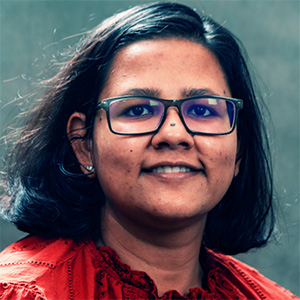Seeking to cure a coronavirus fatal to cats
All of us have witnessed the impact of the COVID-19 pandemic caused by the SARS-CoV-2 coronavirus that claimed more than 6 million lives worldwide. The coronavirus family is made up of RNA viruses that infect many mammals and birds. In humans, outcomes can range from the common cold to fatal pandemics.

Like humans, cats can be infected by coronaviruses. Most cats are exposed as kittens to the feline alphacoronavirus, or FCoV. One study found that 40% of domestic cats in the United Kingdom had antibodies for FCoV, suggesting prior infection. Most FCoV infections are asymptomatic or cause mild disease in the gastrointestinal tract. However, in 5% of cases, the virus spreads and results in a fatal disease called feline infectious peritonitis, or FIP. Experts believe that the gastrointestinal coronavirus strain can mutate into the more virulent virus that causes FIP.
Sheema Mir, an assistant professor at the Western University of Health Sciences in California studies infectious diseases caused by RNA viruses.
“FIP is a devastating disease that affects cats worldwide,” Mir said, “and currently, there are no effective treatments available for this condition.”
A coronavirus enters a host cell and multiplies there before exiting to infect new cells. Before the virus exits, it makes multiple copies of its RNA and packages it into its nucleocapsid, an outer shell that protects the viral RNA outside the host.
Mir’s group found that a novel compound called K31 targets the nucleocapsid protein of FCoV and stops it from multiplying. In cell culture models, the virus was undetectable 24 hours after treatment with a single dose of K31. The researchers reported this discovery in a recent paper published in the Journal of Biological Chemistry.
How does K31 inhibit the virus at the molecular level? When nucleocapsids are packaged with viral RNA, they form ribonucleocapsids, which coronaviruses rely on to make more copies of the viral RNA. K31 disrupts the structural integrity of these ribonucleocapsids, and this has a catastrophic effect on the virus within the host.
“Cell culture studies are useful for the initial screening of potential compounds, and this study provides a promising starting point,” Mir said. “The identification of K31 is an exciting development, but more research is needed to evaluate its effectiveness and safety in living animals.”
Mir’s group previously found that K31 inhibits the Andes virus and a new world hantavirus that causes hantavirus cardiopulmonary syndrome in humans. Initial cell culture studies suggest that K31 is well tolerated by host cells and might be developed into a broad-spectrum antiviral as well as an anti-coronavirus drug.
Previous drug development for coronaviruses has focused on targets such as RNA-dependent RNA polymerase, spike protein, and envelope protein, Mir said, but this study shows the nucleocapsid is also a druggable target.
FIP kills one in every 100–300 cats worldwide. According to Mir, targeted therapies with compounds like K31 could soon be an effective treatment with minimal side effects.
“It is exciting to see that our research project has identified a novel molecule that has potential for further development as an antiviral therapy,” Mir said. “It offers hope to cat owners.”
Enjoy reading ASBMB Today?
Become a member to receive the print edition four times a year and the digital edition monthly.
Learn moreGet the latest from ASBMB Today
Enter your email address, and we’ll send you a weekly email with recent articles, interviews and more.
Latest in Science
Science highlights or most popular articles

Using DNA barcodes to capture local biodiversity
Undergraduate at the University of California, Santa Barbara, leads citizen science initiative to engage the public in DNA barcoding to catalog local biodiversity, fostering community involvement in science.

Targeting Toxoplasma parasites and their protein accomplices
Researchers identify that a Toxoplasma gondii enzyme drives parasite's survival. Read more about this recent study from the Journal of Lipid Research.

Scavenger protein receptor aids the transport of lipoproteins
Scientists elucidated how two major splice variants of scavenger receptors affect cellular localization in endothelial cells. Read more about this recent study from the Journal of Lipid Research.

Fat cells are a culprit in osteoporosis
Scientists reveal that lipid transfer from bone marrow adipocytes to osteoblasts impairs bone formation by downregulating osteogenic proteins and inducing ferroptosis. Read more about this recent study from the Journal of Lipid Research.

Unraveling oncogenesis: What makes cancer tick?
Learn about the ASBMB 2025 symposium on oncogenic hubs: chromatin regulatory and transcriptional complexes in cancer.

Exploring lipid metabolism: A journey through time and innovation
Recent lipid metabolism research has unveiled critical insights into lipid–protein interactions, offering potential therapeutic targets for metabolic and neurodegenerative diseases. Check out the latest in lipid science at the ASBMB annual meeting.

